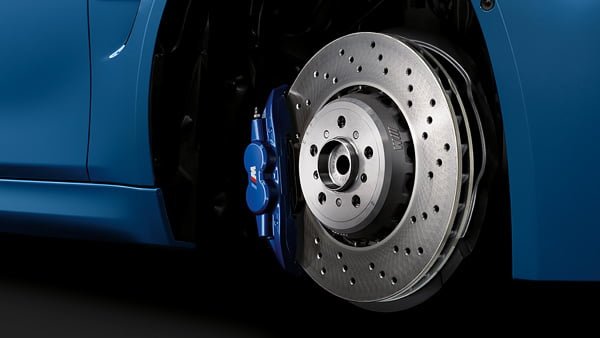We are here with another interesting topic to help you understand some complex functions of the engine in simple terms. As is the case with every article of this series of Automobile Technology Content, we try to pick up technical topics related to internal combustion engines or automobile engineering and try to make you understand the process in simpler terms. We know some of the automobile enthusiasts do love to know everything about their vehicles and are looking for some platform to get answers to their queries and we try to address those topics in this section. Today’s topic is a very interesting one and something that people experience every time they drive their cars. It is called Engine braking. Also, everyone must have heard the word coolant as well. We will try to understand these two concepts in this blog post today. So, let us dive straight into it.
Also read: How do Power and Torque overcome the types of resistive forces in a vehicle?

Engine Braking
The concept of engine braking is actually very simple to experience but a bit difficult to learn about. A lot of people ask about the importance of engine braking and if it is harmful for the engine. We will try to discover the cause of the engine braking and its consequence on the engine. We will also see what role do coolants play in engine braking.
Also read: Types of Turbos – VGT, Twin-Scroll, Twin-Turbo, Sequential, E-Turbo!
Concept
When you are driving in second gear for instance, and you let go of the accelerator pedal you experience a little jerk and the car starts to slow down. This is something that everyone must have experience during driving. In simple terms, this is called Engine Braking. In other words, when your car is in gear and the accelerator pedal is released and the car decelerates without the application of brakes, engine braking is happening. How does it slow down? This can be explained by taking into consideration petrol engines. When the accelerator pedal is released, the throttle valve closes. This means that there is no/very little intake of fresh air into the cylinder. This, in turn, means that the piston, while going down into the suction stroke, pulls against the vacuum. This is actually what causes the engines to slow down over time.
Also read: Types of alternative fuels for cars – LPG, CNG, Bio-diesel, Ethanol!
The piston pulling the vacuum leads to the car slowing down happens every time you release the accelerator pedal irrespective of which gear you are in. In fact, you will experience this greater with 1st and 2nd gears in comparison to 3rd or higher gears. This is because the transmission is driving the engine in this case, which is the opposite of what happens generally. Since the gear ratios of the first and second gears are higher the effect is more pronounced and you get a stronger jerk as soon as you release the gas pedal. In a way, the gears/transmission is holding the car and not the brakes. In mountains, even you are going downhill for a long time, it is preferred to use engine braking rather than actual brakes for that long. This is because over continuous long usage, brakes get heated up a lot and the phenomenon of brake fade starts to appear.
Also read: What is Variable Valve Timing and Lift? How do these affect efficiency and performance?
This is when the cases of brake failure occur. The principle of braking is to convert the kinetic energy into heat energy and release it outside the vehicle. However, over a certain amount, the heat generated can not be dissipated easily and the efficiency of the brakes is affected severely. In comparison, the engine is designed to take and process a lot more heat than the braking compartment. Therefore, the heat generated by the engine braking can actually be handled by the cooling system of the engine. The cooling system of modern-day cars is very sophisticated and can take a lot more beating. It has been tested in extreme conditions over long periods of time. This is the most reliable method of heat dissipation in a vehicle. Let us now transit into the cooling system in depth.
Also read: What is Engine Knock? What are its consequences? How to prevent it?
Cooling System
As explained before, the cooling system is responsible for the heat dissipation from the engine. It is well-known that internal combustion engines produce a lot of heat. This is because the air-fuel mixture is actually ignited and burnt inside the cylinder of the engine. There are actual explosions happening inside the cylinder of the engines within a fraction of milliseconds. These explosions are what cause the piston to move down and generate power. Therefore, there is a lot of heat inside the cylinder. Hence, the cooling systems are engineered to remove all that heat from the engine efficiently which is why the coolants are used.
Also read: How does OBD (on-Board Diagnostics) function?
Coolant
Coolants are additives that are added to the water to be used inside the engine to aid the cooling system of the vehicles. The coolants are special compared to using regular water in that water produces steam and expands under hot conditions. On the other hand, it freezes and becomes hard during extremely cold conditions. Both of these scenarios can occur at any time during the operation of cars. Hence, water is not suitable to use as a coolant. The coolant has the properties of lowering the freezing point and increasing the boiling point so that a broader window of temperature is available for the engine to operate under. This means that the water and coolant mixture will not boil at 100-degree Celcius but at a higher temperature and it will not freeze and 0-degree Celcius but at a much lower temperature. This enables the engines to work even in harsh and extreme weather conditions effectively.
Also read: What are Catalytic Converters? How do they reduce emissions?
That is also the reason why engine braking is more useful for long descents compared to using the normal brakes in a vehicle. The coolant runs throughout the engine to cool down the components and is connected to a radiator. The coolant gathers heat from all sorts of areas from the engine and releases it inside the radiator and gets cooled again. In this way, the coolant keeps running in a circuit and the temperature of the engine operation is maintained at the desired value. The coolants are of different colours so that they are easily recognizable if they leak from somewhere.
These are the functions of a coolant inside a cylinder. We hope that you are clear about the function of engine braking in the car and would want to try to use it on the road. Also, now you know the functioning of the cooling system along with the coolant inside the cylinder. Do follow Car Blog India to stay in touch with the technical aspects of your cars in our Automobile Technology section.
Also read: What are engine remapping, tuning and calibration? Should you remap your car?


